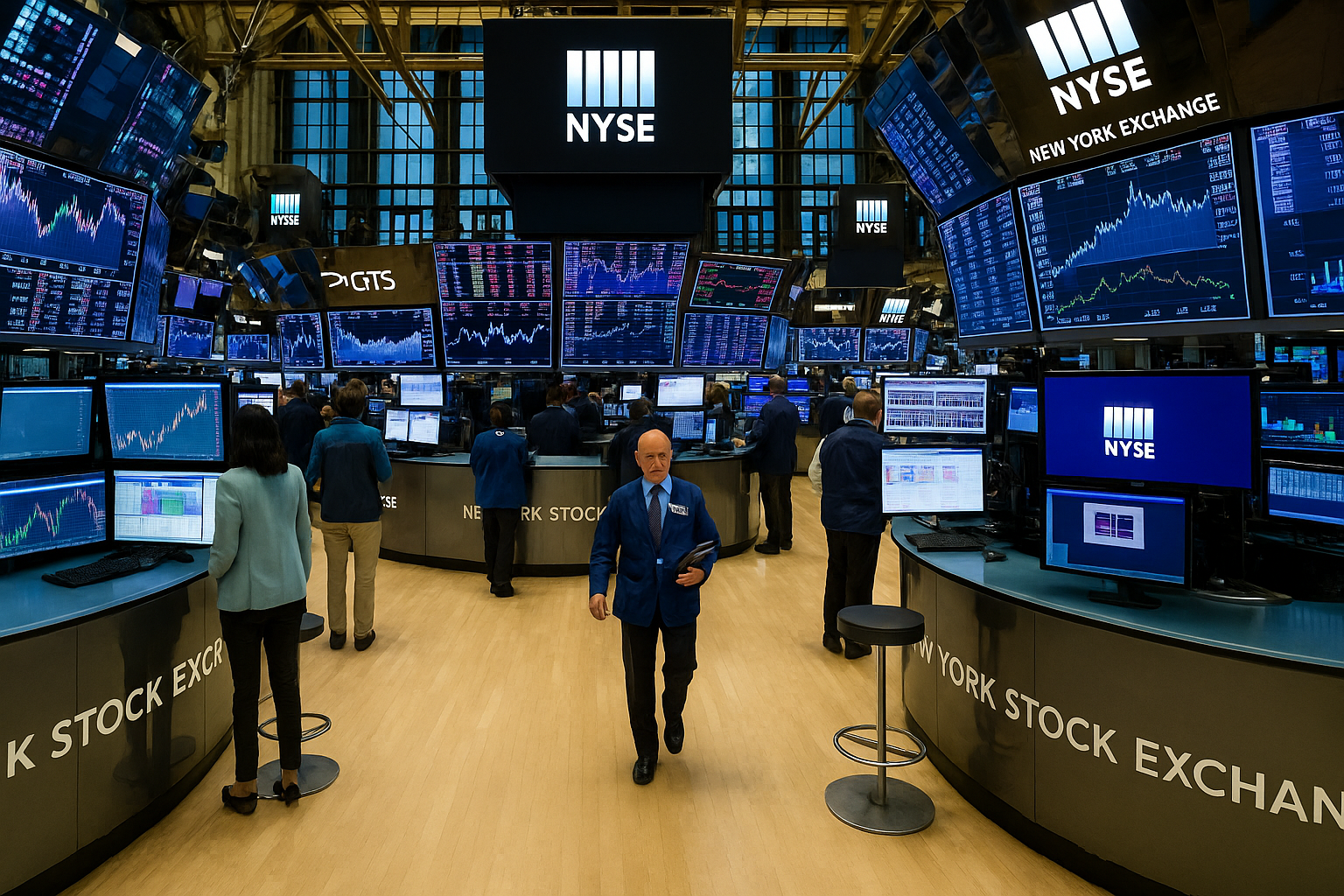
By: Sayan
Published on: Jun 17, 2025
Global financial markets are navigating a minefield of uncertainty as a potent combination of geopolitical turmoil, volatile energy prices, and impending central bank decisions grips investor sentiment. Wall Street futures have been flashing warning signs, with traders hesitating to take on risk amidst escalating conflict in the Middle East. This geopolitical flare-up is sending shockwaves through the commodity markets, pushing crude oil to precarious highs. While this has provided a significant, albeit isolated, boost to U.S. energy stocks, the broader market is treading water, anxiously awaiting the Federal Reserve's next move on monetary policy this Wednesday.
This confluence of events has created a complex and tense environment, forcing investors to weigh the bullish case for the energy sector against the bearish sentiment clouding the wider economy. Let's dissect the key factors at play and what they mean for your portfolio.
The primary driver of the current market anxiety is the escalating conflict in the Middle East. Tensions in this critical, oil-rich region have historically been a major source of global economic instability, and the current situation is no exception. Concerns are mounting over potential disruptions to major shipping lanes, such as the Strait of Hormuz, through which a significant portion of the world's oil supply travels daily.
Any hint of a wider conflict or direct impact on production facilities in key OPEC+ nations sends immediate jitters through the energy markets. This isn't just about the immediate physical supply; it's about the "fear premium" that gets priced into every barrel of oil. Traders and nations begin to hoard supplies, anticipating future shortages, which artificially inflates demand and, consequently, prices. The uncertainty forces businesses to brace for higher energy costs, which can stifle investment and hiring, while consumers face the pinch at the pump, reducing their disposable income and overall economic activity.
The most direct and immediate consequence of this geopolitical unease is the surge in oil prices. Both Brent Crude, the international benchmark, and West Texas Intermediate (WTI), the U.S. benchmark, have climbed, reflecting the market's assessment of the increased risk. This rally is a double-edged sword.
For oil-producing nations and companies, it's a revenue windfall. However, for the global economy, which runs on oil, it's a significant headwind. Rising energy costs are a primary driver of inflation. They increase transportation expenses for goods, raise manufacturing costs, and lead to higher utility bills for households. This surge in crude prices comes at a particularly sensitive time, just as central banks around the world were beginning to see signs of cooling inflation.
In this environment of caution, the U.S. energy sector has emerged as a clear outperformer. As crude prices climb, the profit margins for oil and gas companies expand dramatically. This was clearly reflected in premarket trading, where a sea of red was punctuated by green shoots from the energy giants.
This performance isn't just a knee-jerk reaction. It represents a fundamental repricing of these assets based on new revenue expectations. Investors are rotating out of sectors vulnerable to economic slowdowns (like technology and consumer discretionary) and into sectors that offer a hedge against inflation and geopolitical risk. The energy sector is, for the moment, that safe harbor.
Compounding the geopolitical anxiety is the critical monetary policy decision looming from the U.S. Federal Reserve. The Federal Open Market Committee (FOMC) is set to conclude its meeting this Wednesday, and the market is holding its breath.
The overwhelming consensus is that the Fed will opt to keep interest rates unchanged in the current cycle. After a series of aggressive hikes to combat runaway inflation, the central bank has entered a "wait-and-see" mode, assessing the impact of its policies on the economy. However, the decision is far from simple.
The recent surge in oil prices throws a major wrench in the Fed's plans. The central bank's primary mandate is to maintain price stability. If higher energy costs lead to a sustained rebound in the Consumer Price Index (CPI), it could force the Fed to abandon its patient stance and maintain a hawkish outlook for longer than anticipated. This could mean keeping rates higher for longer or even signaling that another rate hike is not off the table.
Investors will be dissecting every word of the Fed's post-meeting statement and Chairman Jerome Powell's press conference. They will be looking for clues on:
The fear is that a hawkish tone from the Fed, combined with existing geopolitical risks, could tip the scales towards an economic slowdown or recession. Higher borrowing costs for a longer period would put pressure on corporate earnings, curb consumer spending, and hit interest-rate-sensitive sectors like housing and technology hard. This is the primary reason why the broader market, as reflected in S&P 500 and NASDAQ futures, is retreating despite the strength in the energy sector.
In conclusion, Wall Street finds itself at a precarious crossroads. The rally in energy stocks offers a tempting but narrow opportunity, born from a conflict that threatens wider economic stability. The true direction for the market will be determined by how the Federal Reserve chooses to navigate this complex new landscape. Wednesday's announcement won't just be about interest rates; it will be a crucial signal of how the world's most powerful central bank plans to steer the economy through a perfect storm of geopolitical and inflationary threats. For now, caution is the watchword.
Comments
No comments yet. Be the first to comment!
Leave a Comment